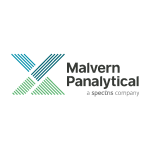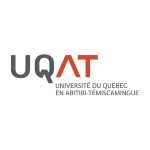
AI-Driven Core Scanning & Assessments for Sustainable Mining
Using AI to revolutionize geometallurgical and geoenvironmental assessment methods.
Project Overview
Updated September 9, 2024
The Problem
Critical mineral demand for green and digital technology solutions in the global transition towards a lower carbon future continues to grow. Mining companies around the world face enormous pressure to deliver metals and minerals, in addition to addressing issues of sustainability, profitability and resilient supply chains. There is an urgent need for highly efficient approaches in the mining industry that prioritizes minimal waste and reduced environmental impact in ore body management, while remaining productive, streamlined and cost-effective.
Geotechnical engineering and geometallurgy arise as crucial interdisciplinary approaches that offer the mining industry tools to predict and tackle the multitude of complex challenges, including volatile demand, intricate geological conditions, diminishing ore quality, thereby improving sustainability and environmental accountability throughout the entire mining operation. The process of addressing how particular blocks of ore deposits will behave during the exploitation phase involves developing 3D geotechnical (GeoTech), geometallurgical (GeoMet) and geoenvironmental (GeoEnv) block models that depict how an ore deposit behaves in terms of geotechnical, mineral processing and environmental considerations during the exploitation stage.
While these 3D block models hold numerous advantages for the mining sector, the conventional approaches within this field often pose challenges of high sample demands and costs; subjectivity in sample selections; and data sparsity and quality.
The mentioned challenges necessitate a reevaluation and modification of existing workflows in creating GeoTech, GeoMet and GeoEnv 3D block models to effectively respond to the critical question.
How We Are Solving It
Led by Agnico Eagle Mines, a global industry leader in gold mining, in collaboration with GeologicAI, Malvern Panalytical, Minpraxis Solutions and the Université du Québec en Abitibi-Témiscamingue (UQAT); this project addresses obstacles in extending the insights of these 3D block models from conventional methods by introducing cutting-edge geometallurgical and geotechnical tests and seamlessly incorporating state-of-the-art automated drill core scanners and artificial intelligence (AI) methods. These advances include:
- Integrating automated core scanning and transforming sample selection: The incorporation of a multi-sensor automated core scanner designed for geometallurgical and geoenvironmental applications, along with the AI-driven approach based on core scanning, will aim to eliminate subjectivity in the manual core sampling process. This will lead to improved representativeness of the selected samples and enhance the accuracy of the resulting models.
- Establishing a framework for Geotechnical (GeoTech) and Geometallurgical (GeoMet) Mini Tests: These tests strike a balance between minimal sample quantity, reduced testing durations, cost-effectiveness and precision for interpreting geotechnical and metallurgical characteristics, and are expected to partly replace traditional geotechnical and metallurgy tests for rock hardness (i.e. comminution) and competence evaluation.
- Harnessing AI-powered 3D predictive models that will utilize the automated core scanning and GeoMet Mini tests to provide exceptional precision when assessing the variability of ore bodies.
- Enhancing geotechnical, metallurgical and environmental productivity to reduce reliance on chemical substances and enhance the ability to predict and identify the composition of mine tailings, thus mitigating environmental risks.
The project offers unique opportunities for the team to not only achieve its immediate goals of developing commercialized products but also position themselves as a global leader in innovation, influencing industry standards, fostering collaboration, and contributing to the sustainable and responsible advancement of the mining sector worldwide. Across the project partners alone, it is anticipated to save at least 24,000 man-hours a year that were previously allocated to conventional metallurgical testing, core logging and manual sampling. Its benefits will inform the development of selective mining strategies, ensuring economic viability and minimizing the potential for operational setbacks.
The project’s scalability and versatility go beyond the confines of conventional mining services, extending their advantages to AI technology providers, consulting firms, data services and academia. These entities can enhance their offerings in fields like geology, mining engineering, metallurgy, environment and software for geoscience, while also exploring markets that uphold stringent quality standards, such as the electronics industry.
This project not only showcases AI-driven Canadian technology on a global stage but also presents a worldwide prospect for mining companies and their collaborators to enhance the evaluation of gold and critical mineral resources, boost production recovery rates, reduce energy consumption and environmental hazards, and optimizing NPV. Ultimately, this approach contributes to fostering a more resilient and sustainable mining industry in alignment with the evolving demands of the future.




